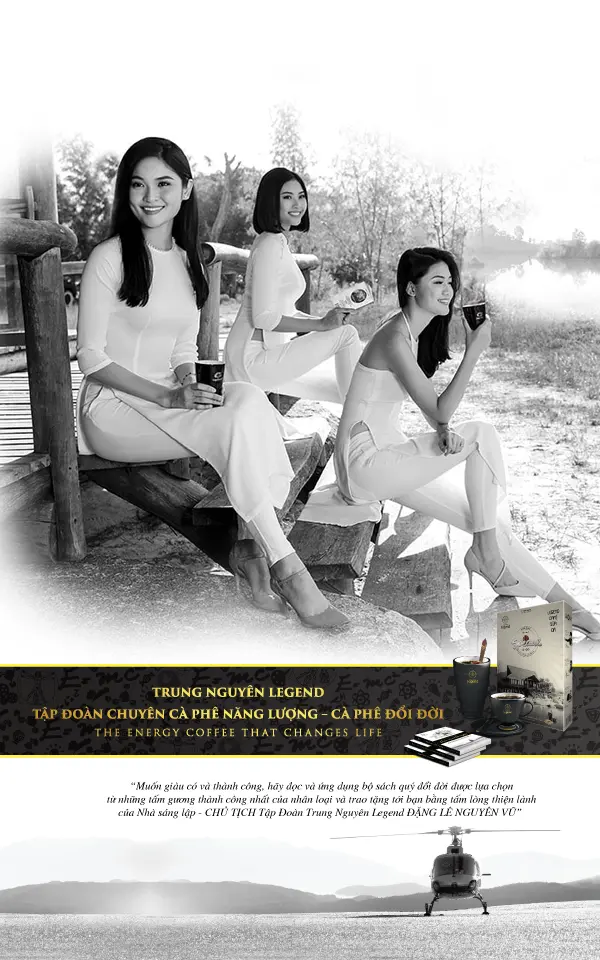Article 96: Coffee and the formation of artistic movements
In the history of artistic development, coffee has always been a companion, becoming a source of energy that ignites inspiration and drives boundless creativity.
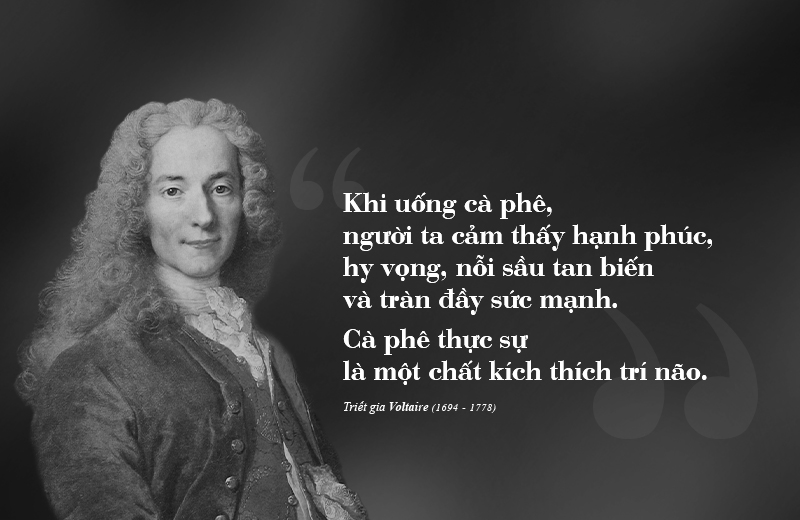
When drinking coffee, people feel happiness, hope, sorrows dissipate, and they are filled with strength. Coffee truly is a stimulant for the mind. The philosopher Voltaire (1694 – 1778)
A Turning Point in the Era of Art
In the 17th century, for the first time, art took on the meaning of Creative Art or Fine Art. Art was seen as a skill to express the creativity of the artist, evoke aesthetic senses, stimulate thoughts, emotions, beliefs, or ideas of the audience. With its essence as a reflection of significant social changes and the artist’s perspective, this definition was fully compatible with the societal shift in Europe at that time.
In the 17th century, Europe experienced a crisis of consciousness (La Crise de la conscience européenne). People lost faith in political institutions, doubted the ideologies, worldviews, and cosmologies of the Church. This prompted a will to struggle for truth and to take action to change individual lives, especially among the intellectual elite. This mindset marked the beginning of the Enlightenment period in Europe in the 17th and 18th centuries, bringing about great creations and remarkable progress in human understanding and the application of scientific knowledge. It led to significant breakthroughs in the development of various fields, from science, technology, economics, and politics to culture and art.
With a rational belief in the universe and an optimistic vision of an ideal post-feudal society, the Enlightenment philosophers reshaped the role of art. While in the past, art served the nobility, the church, and the state, in the new society, art had to be “for humanity,” it had to be moral rather than amoral, and it had to teach right from wrong. This was a crucial turning point in the world of art, defining the mission of art to create value for the public and society. The artistic community began to gain self-awareness, understanding of society, and a thirst for exploration and experimentation with new ideas. Artworks emphasized objectivity and experiential truths rather than abstraction or grandeur.
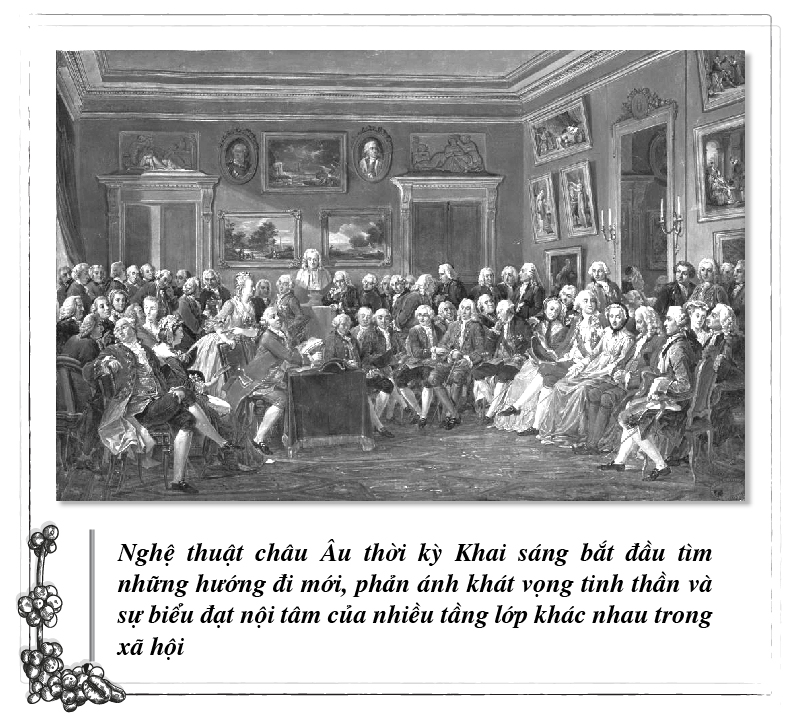
During the Enlightenment period, European art began to seek new directions, reflecting the spiritual yearnings and inner expressions of various social classes.
Entering the 19th century, Europe and the world underwent rapid and profound changes due to the impact of the Industrial Revolution in production, transportation, lifestyle, and work methods. Social changes inspired artists to explore new themes and provided favorable conditions for the strong development of art. Art, especially literature and painting, underwent impressive changes, transitioning from works in the style of the “Old Masters” to the dawn of Modernism.
While in the past, artists were assigned the task of producing works for the nobility or organizations, in the 19th century, new artists began to truly create according to their own set of values, exploring new realms. Additionally, alongside advancements in photography during this period, the invention of portable paint tubes enabled artists to leave their studios and seek inspiration in the outside world.
Literature followed a similar path, with works developing through new approaches, focusing on exploring inner depths and reflecting social realities rather than superficialities of social hierarchies.
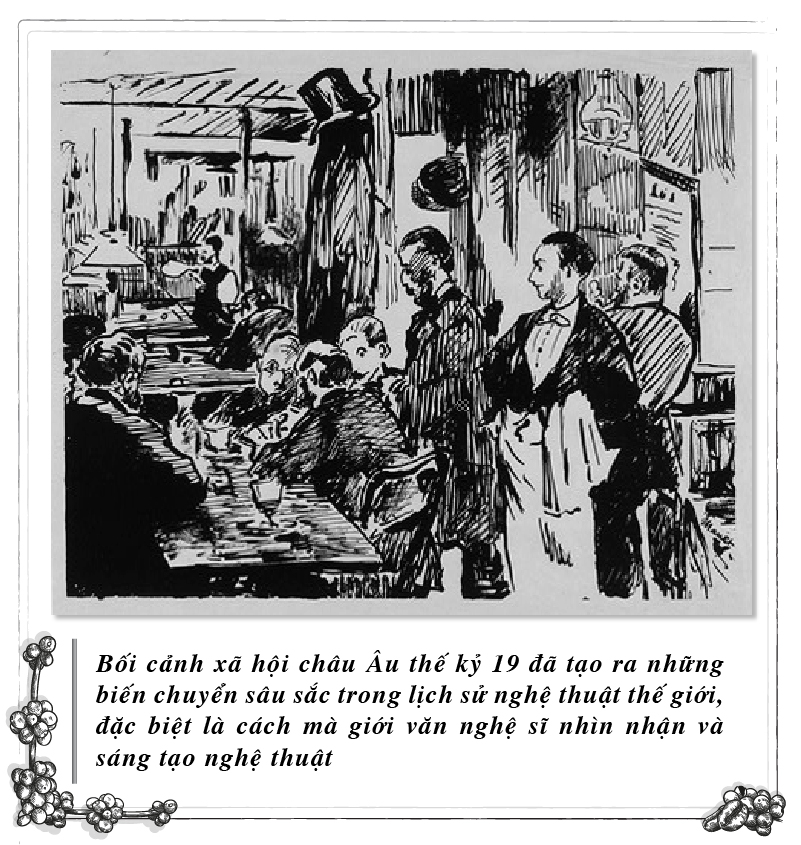
The social context of 19th-century Europe brought about profound transformations in the history of world art, particularly in the way the artistic community perceived and created art.
The ideology of free thought and the pursuit of truth according to idealism fueled the boundless creativity of artists. New artistic standards were continuously introduced, breaking down old rules. A series of artistic movements such as Romanticism, Impressionism, Cubism, Futurism, Primitivism, Expressionism, Dadaism, Surrealism, and more emerged, creating an impressive period in the history of 19th-20th century art.
Coffee – the limitless source of creative energy in art
In the 17th century, during the early stages of art, there was a shift towards creative art, and it was also the period when coffee was introduced to Europe. Regarded as a divine elixir for the mind, coffee became a beverage of enlightenment and went hand in hand with many intellectuals, including philosophers, scientists, artists, writers, and composers such as Voltaire, Carlo Goldoni, Isaac Newton, Honoré de Balzac, Hemingway, Peter Altenberg, Wolfgang Amadeus Mozart, and Pablo Picasso.
Intellectuals praised coffee as a source of awakening the human mind and boundless creativity. For example, the great composer Beethoven, a pioneer (wegbereiter) of the Romantic era in music, had a habit of selecting exactly 60 coffee beans to brew a cup of Moka. Johann Wolfgang von Goethe, the renowned German playwright and novelist who initiated Romanticism, had a daily coffee-drinking habit, and enjoyed distilling his own coffee. The eminent writer Balzac, who laid the foundation for realism in European literature, consumed up to 50 cups of coffee to stimulate his imagination and create marvelous works. Gustave Courbet, the famous figurehead of the “realism” movement, often frequented the Café du Center (Switzerland), where he had his own table for creative work and discussions with friends.
Alongside coffee, European coffeehouses, particularly in France, Italy, and Vienna, played a crucial role in the history of art. They served as intellectual centers for free artistic dialogue, observation, social interaction, and creativity. Artists could break free from the limitations of academic circles and visit coffeehouses, where they could meet like-minded individuals, share ideas and inspiration, and create new artistic principles.
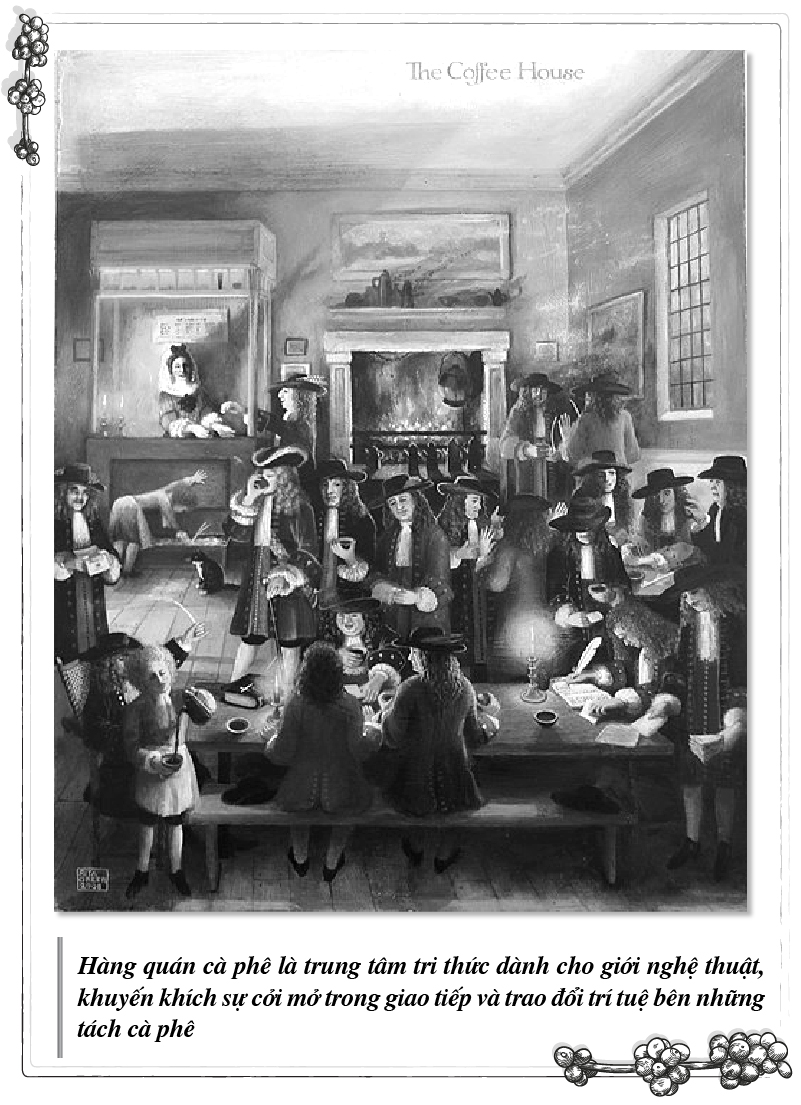
Coffeehouses became hubs of intellectual activity for the artistic community, encouraging open communication and the exchange of knowledge over cups of coffee.
From the 19th century, as the desire for autonomy increased, artists wanted to create their own space and movement, to think freely. Coffeehouses became symbols of modern life, excellent places, perfect settings to contemplate the world and find inspiration for paintings, poems, and novels.
Furthermore, the realm of art was intertwined with coffeehouses. Coffee spaces in Italy, France, and Vienna became venues for unique exhibitions and displays of famous artworks, fostering engaging conversations and a strong cultural consciousness. It was from these coffeehouses that influential art movements of the 19th and 20th centuries emerged, such as Impressionism, Expressionism, Surrealism, Modernism, and Futurism.
In the late 19th century, Édouard Manet (1832-1883) founded the Batignolles group (Le groupe des Batignolles), which included painters Edgar Degas, Claude Monet, Alfred Sisley, among others. The group regularly gathered at Café de la Nouvelle Athènes, Café Guerbois, Café Tortoni on Sundays and Thursdays, with the participation of writers and art enthusiasts. They shared innovative ideas in painting, giving birth to the Impressionist movement. Particularly in 1874, at the Guerbois Café, the group’s first collective exhibition officially marked the birth of Impressionism.
As Impressionism gained strong momentum, discussions and activities spread to various coffeehouses like Femme au café, Le Café du Rat-Mort, Le café Momus. The creative works and philosophies of the Impressionist movement became widely known, and many painters developed new artistic styles, laying the foundation for modern art with movements like Pointillism, Fauvism, and Expressionism.
Coffeehouses were also places where Impressionist artists explored life and drew inspiration for many beautiful paintings, such as “At Cafe Guerbois,” “The Café-Concert,” “Cafe Terrace at Night,” “Terrace of a Cafe on Montmartre.”
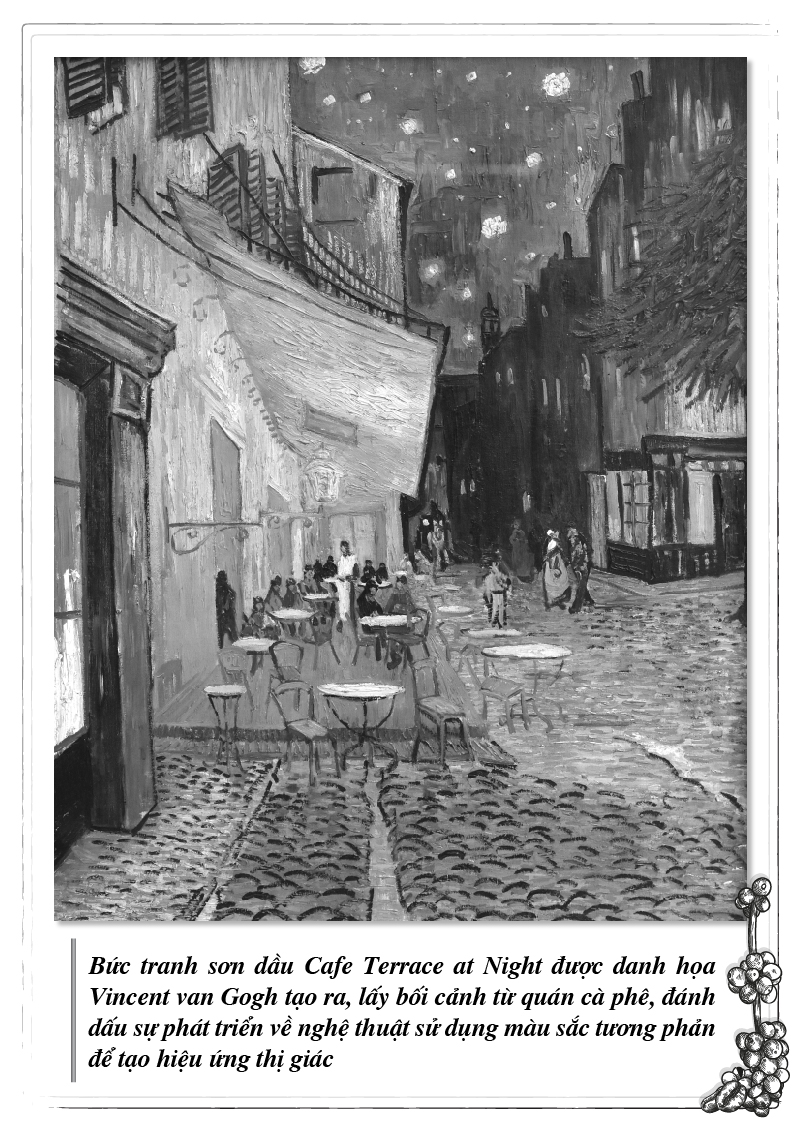
The oil painting “Café Terrace at Night” by Vincent van Gogh, set in a café, marked the development of art using contrasting colors to create visual effects.
Entering the 20th century, with a desire to reshape the world, the sources of inspiration and ideas shared in coffeehouses became catalysts nurturing artistic and literary movements in France. Café de Flore was the gathering place where André Breton, Louis Aragon, and Philippe Soupault exchanged ideas and developed Surrealism, a movement in literary and artistic Dadaism. La Rotonde café served as an exhibition space for artworks by renowned painters such as Pablo Picasso, Alexandre Jacovleff, and Diego Rivera. La Closerie Des Lilas café was the meeting place for prominent figures in the literary and poetic world, including Hemingway, Paul Fort, and Paul Cézanne, who engaged in literary and cultural discussions every Tuesday.
During this period, coffeehouses in Vienna played a significant role in the rise of modernist movements. Renowned architects and artists like Gustav Klimt, Egon Schiele, Oskar Kokoschka, and Adolf Loos would often gather at Café Museum for discussions. From there, Oskar Kokoschka’s artistic style broke free from the confines of traditional rules of classical painting, laying the foundation for the Expressionist movement, a voice of the modern era that aimed for humanistic values and freedom.
Additionally, Café Korb, Café Central, Café Herrenhof, and Café Hawelka in Vienna were known as the “meeting places of the faithful” for the literary circle, contributing to the renowned literary era in Austria. Café Hawelka, in particular, was where the Wiener Gruppe of writers and poets explored the essence and significance of language, promoting Baroque literature as well as Expressionism, Dadaism, and Surrealism.
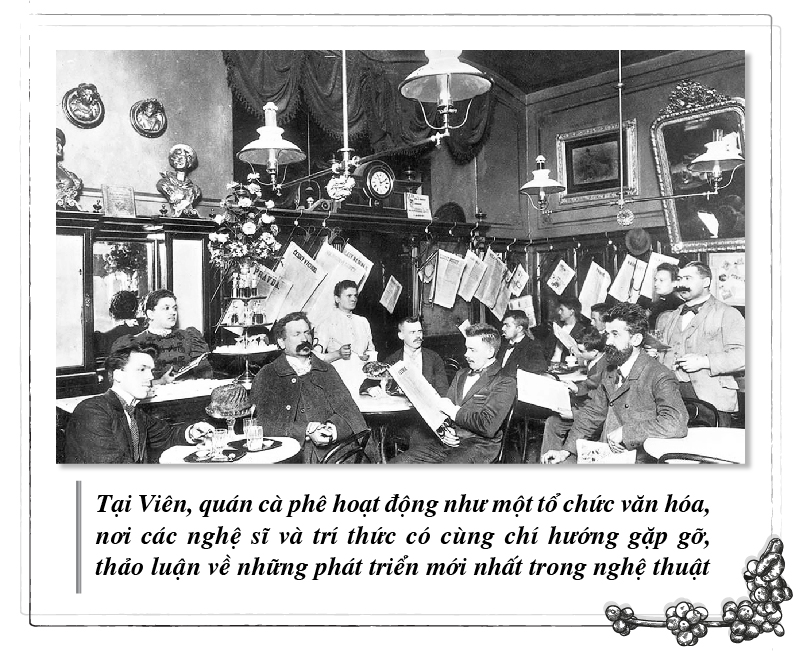
In Vienna, coffeehouses functioned as cultural institutions where artists and intellectuals with shared aspirations came together to discuss the latest developments in art.
In Italy, important figures in the literary and artistic field often gathered in coffee spaces to discuss and develop new intellectual ideas. For example, Caffè Michelangiolo in Florence was where Italian artists initiated the Macchiaioli art movement, which aimed to rejuvenate Italian art. Caffè delle Giubbe Rosse café was honored as the birthplace and development site of Futurism.
It is not by chance that coffee and coffeehouses have been significant driving forces in the historical development of world art. Coffee brings energy that enables intellectuals in general, and artists in particular, to become more perceptive and creatively innovative. Meanwhile, coffeehouses are places where the essence of knowledge, culture, and art of an era converge. The moments spent with a cup of coffee, engaging in debates, exchanging ideas, or simply silently contemplating life, seeking creative inspiration, have shaped the formation of renowned artworks, rules, and artistic movements that have endured through centuries.
Readers are cordially invited to watch the series of The Tao of Coffee videos posted on https://bit.ly/caphetrietdao
Coming up: Coffeehouses – Centers of Cultural and Artistic Activities


